The world is a big, wonderful place full of facts we never thought possible. For instance, if a pregnant mouse has a sudden medical issue, the fetus will send stem cells to heal the mother, increasing its chances of survival as well. Fetal stem cells have been found in human mothers as well, dubbed by science as microchimerism.
Bright Side dug up some more marvelous facts about nature and its creations, upholding our yearly resolutions to spread knowledge and joy.
1. The heart slows when your face touches water.
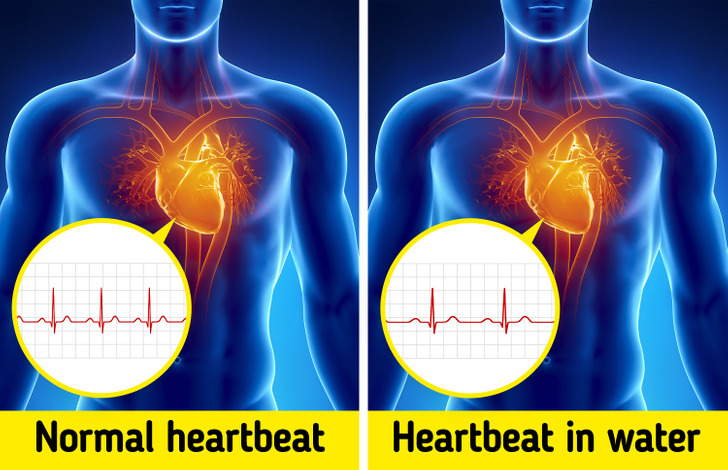
As mammals, we can’t breathe underwater, so as part of the mammalian dive reflex, our heart rate goes down in the water — more so if we go underwater. Even splashing the face with water makes the heart slow down, making it a great way to calm down.
2. Fungus can break down plastic in weeks.
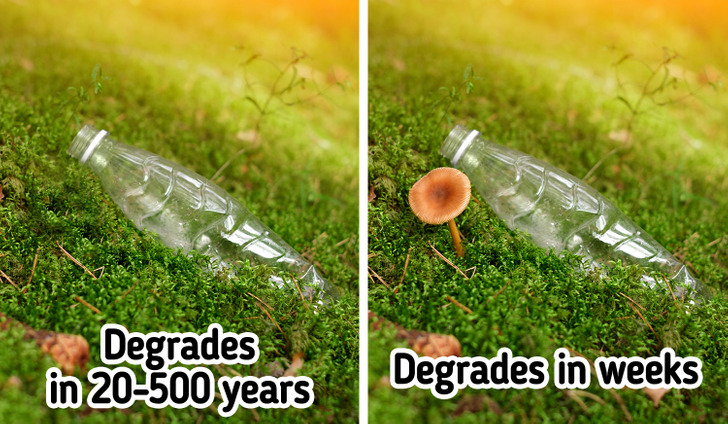
It is said that in the future, there may be more plastic in the ocean than fish. This is why the plastic-eating fungus is great news, and there are around 50 new species of such fungi discovered already. One of the fungi discovered can digest plastic within 2 months, so there’s hope for us yet.
3. Newborn babies can support their own weight.

Newborn babies are strong — strong enough to be able to grasp things in their tiny fists and even support their weight as shown by an experiment done in the nineteenth century. Louis Robinson witnessed babies able to hang from a walking stick, from 10 seconds to 2 minutes and 35 seconds.
4. Koala fingerprints have been mistaken for human ones.
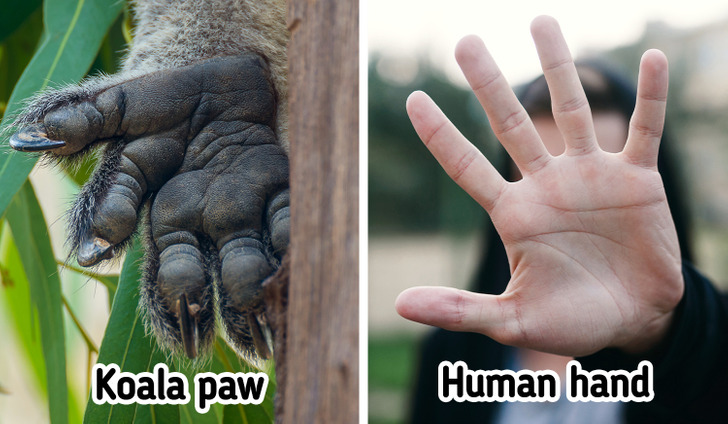
We’ve been told that our fingerprints are unique, and they are. But the fact remains that even though we share a common ancestor with the koala that was alive 100 million years ago, koala fingerprints look very similar to human fingerprints, as do chimpanzee fingerprints for that matter.
5. Snails can sleep for 3 years.
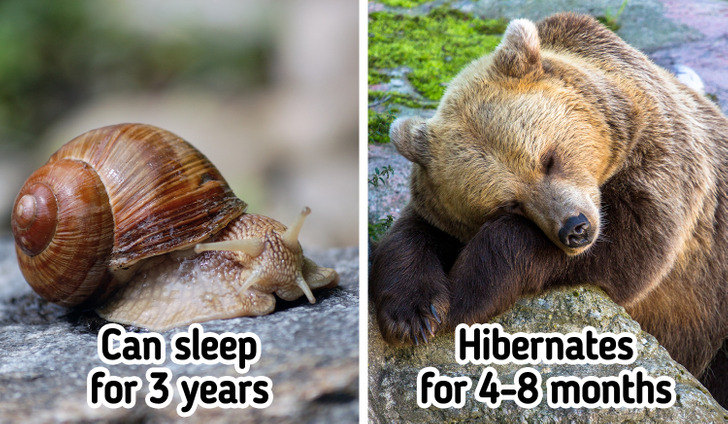
If you thought bears had it good with hibernation, meet the snail. Snails can sleep rather than hibernate for 3 years at a time without needing food. Of course, this is with some snail species, not all of them. Meanwhile, bears usually hibernate for just 4-8 months.
6. Sloths need 2 weeks to digest food.
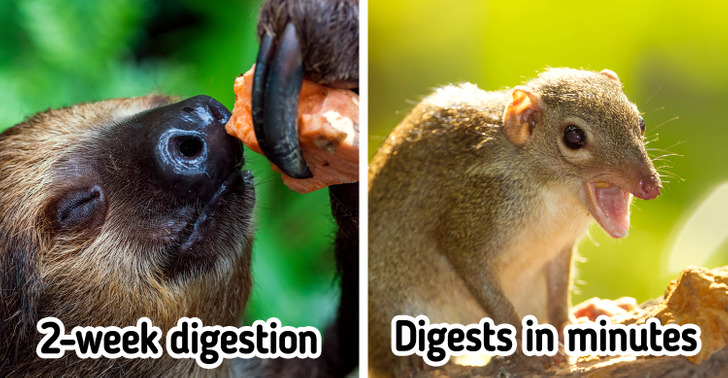
Sloths don’t only move in slow motion — even their insides move slowly, ostensibly to preserve energy, which is why a sloth’s digestive system takes 2 weeks to process the food it ate. Plus, most of what it eats is indigestible, giving it very little energy from each slowly chewed mouthful.
On the other end of the spectrum lies the shrew, whose digestion takes mere minutes and is done so fast, not much of it is fully digested. This is the reason why shrews eat their own feces. They can die of starvation in a matter of hours if they don’t eat.
7. Your brain ignores seeing your nose.

We can see our nose all the time, it’s just that the brain tends to ignore it because it’s a constant visual stimulus. It’s the same with people who wear glasses. After a while, they simply stop noticing them.
8. Your forearm is the same length as your foot.

If you don’t have the time to try on a shoe, measure it from your elbow crease to your wrist. If it fits or is just a little smaller, it would fit your foot because the length of your forearm is the same as your foot. And this is just one of many human body ratios that are a marvel in themselves, including the fact that your femur bone is one-quarter your height.
9. You can “see” your white blood cells.
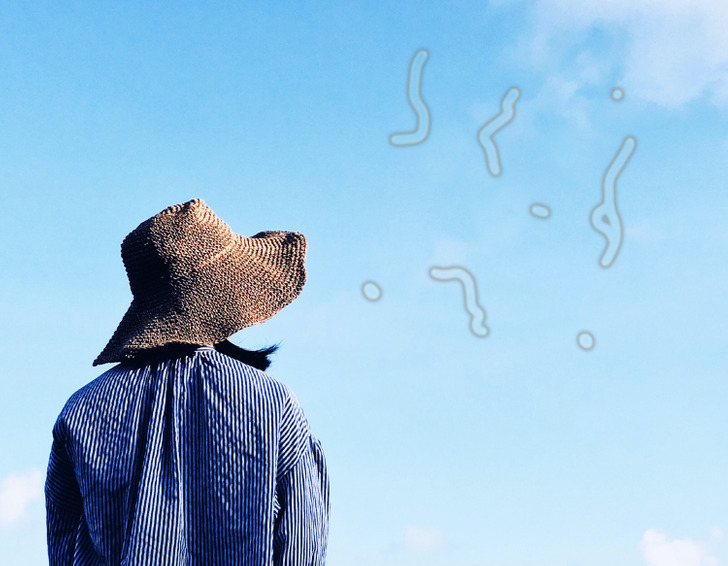
If you look up at a cloudless, bright blue sky and see some wiggly things at the periphery of your vision, you’ve just experienced the blue field entoptic phenomenon. The wiggly things are white blood cells moving in the fine blood vessels moving in front of the retina, at the back of the eye.
10. Human beings have striped skin, but only cats can see it.

Human beings have stripes and patterns on the skin too, and they are called Lines of Blaschko, name eponymously by the scientist who discovered them, Dr. Alfred Blaschko. These are closer to tiger stripes, forming more of a V-pattern fanning out from the center to the extremities. These lines are visible under UV light, a spectrum that cats can see too, which is why cats can see you as a striped being as well.
Which of these facts turned out to be a revelation for you? Share your extreme nature facts with us and blow us away.
Preview photo credit Shutterstock.com, Shutterstock.com
Where Was Beyoncé? The Real Reason Behind Her 2024 VMAs Absence Despite 3 Nominations
Even though her latest album has been a big success, Beyoncé did not attend this year’s VMAs. Before the event, she shared some personal insights about her life as an artist, which might explain why she wasn’t there.
Many of the biggest stars in the music industry showed up for this year’s Video Music Awards (VMAs) in Elmont, New York. Celebrities dazzled in stunning outfits as they posed for photos. But one star missing from the spotlight was Beyoncé, even though she was nominated for three awards.

Beyoncé, known for her hit song “Countdown,” was nominated for **Song of the Year**, **Best Trending Video**, and **VMAs Most Iconic Performance**. The last two categories are fan-voted, allowing her supporters to have a direct influence on the outcome. Despite these nominations, she was notably absent from the event.

Beyoncé received two of her nominations—**Song of the Year** and **Best Trending Video**—for her hit song *”Texas Hold ‘Em,”* the lead single from her latest album *”Cowboy Carter.”* The album has been a global sensation, further cementing her influence in the music industry despite her absence from the VMAs.
Beyoncé’s third nomination, for **Most Iconic Performance**, was for her beloved classic *”Love on Top.”* Despite not having released official music videos for her latest album *”Cowboy Carter,”* she still managed to secure these impressive nominations, showcasing her enduring influence and the impact of her music.

Beyoncé did release an official lyric video for *”Texas Hold ‘Em.”* The video is simple yet striking, featuring bold red capitalized letters displaying the lyrics. The backdrop includes imagery of a building, barbed wire, and a satellite dish, adding a gritty, atmospheric feel to the song, even though there’s no full music video yet.
At the VMAs, *”Texas Hold ‘Em”* faced stiff competition, going up against other critically acclaimed songs by some of the biggest names in the entertainment industry. Despite the tough competition, Beyoncé’s track still managed to stand out, earning her nominations in key categories.
Beyoncé was in impressive company for the **Song of the Year** award, with fellow nominees including Taylor Swift and Post Malone for their song *”Fortnight,”* Kendrick Lamar for *”Not Like Us,”* Teddy Swims for *”Lose Control,”* Jack Harlow for *”Lovin On Me,”* and Sabrina Carpenter for her hit *”Espresso.”* These stars, each with their own critically acclaimed tracks, made the competition for the award especially fierce.

Although Beyoncé was not present to celebrate her nominations at this year’s VMAs, which were ultimately won by other artists, this isn’t the first time she’s missed the event. The last time she attended the VMAs was in 2016, making her absence this year less surprising to long-time fans.

Before the 2024 VMAs, Beyoncé gave an interview with *GQ*, where she opened up about her career and what it’s like being one of the biggest stars in the world. In the interview, she shared personal insights and reflections on her journey, offering fans a rare glimpse into the pressures and rewards of her life as a global icon.

During the interview, Beyoncé was asked about her **reputation as a perfectionist**, a trait often reflected in her exceptional work, including her songs and documentaries like *”Homecoming”* and *”Renaissance.”* She discussed how this drive for perfection influences her creative process and the high standards she sets for her projects.
Beyoncé was asked if her reputation for perfection ever feels like a burden, as if she’s trapped or carrying a heavy weight. She was probed about whether the pressure to maintain such high standards ever feels overwhelming.
In response, Beyoncé said, “Working on the music for *‘Cowboy Carter’* and launching this new project don’t feel like a prison or a burden at all. Actually, I only focus on what makes me feel free and inspired.”
Beyoncé did admit that fame can sometimes feel like a prison. She explained, “So, when you don’t see me on red carpets or when I take a break until I have new art to share, that’s why.”
The beloved singer, who once held the Guinness World Record for the most MTV Video Music Awards wins (30) between 2000 and 2021, also talked about her creative process. She emphasized that she works at her own pace and hopes that her music inspires listeners to reflect on themselves and develop their own resilience, strength, and creativity.
In the interview, Beyoncé shared, “I focus on storytelling, growth, and quality. I’m not concerned with perfectionism. My focus is on evolution, innovation, and changing perceptions.”



Leave a Reply